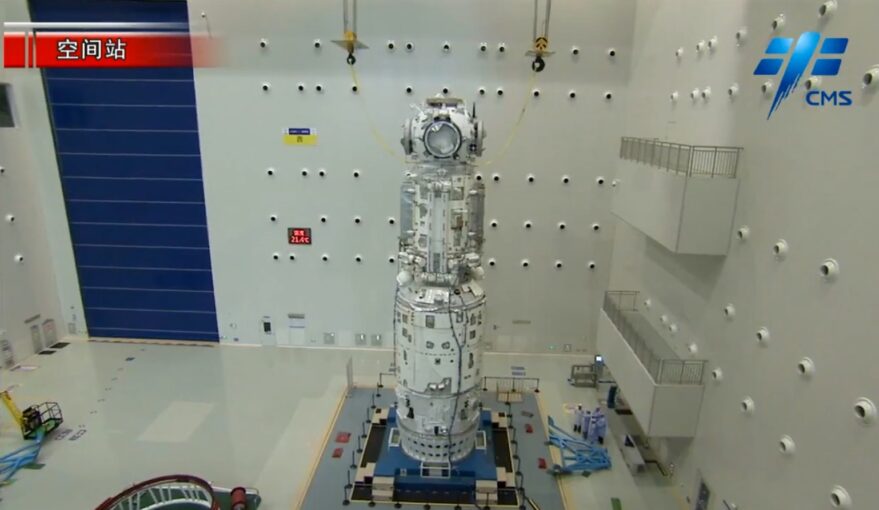With the first week of 2021 behind us, let’s look forward to the coming year and see what the major space missions are and what we can expect to see in 2021.
Artemis 1
Artemis is NASA’s programme to land the first woman and next man on the Moon and create a permanent presence there. They currently target the first landing for 2024. Artemis 1 will be the first test flight of the programme. It is expected to take place in November and will be unmanned. The flight will take the Orion capsule to lunar orbit where it will stay for between 6 and 23 days before returning to Earth. This will be first launch of the new Space Launch System (SLS) heavy lift rocket and the Orion capsule. It is expected that, if successful, the flight will certify the system to carry crew.

Mars
Mars will be the centre of attention this February. Not one, not two, but three spacecraft are currently making their way to the Red Planet and are due to arrive in February. The first to arrive will be Al Amal (Hope), send by the United Arab Emirates. This is an orbiting spacecraft which will monitor the Martian weather for about 2 years. It is expected to arrive on 9th February.
Next on the list is Tianwen-1 which was launched last summer by China. It will be China’s first mission to Mars. Tianwen-1 consists of an orbiter and rover which will attempt to land on the surface. This is something that no other country has attempted on their first Mars mission. It will enter Mars orbit on 10th February but won’t attempt the landing until May.
Last but not least is NASA’s Perseverance Rover. This is part of a wider plan to return samples of Mars to Earth. It will collect the samples and leave them in canisters on the surface for a future, as yet unplanned mission to collect. The rover will also carry a helicopter called Ingenuity. This will be the first time a vehicle performed a powered flight outside of Earth. It will attempt to land on 18th February using a “sky crane”.

Boeing Starliner Test
Last year, we saw Space X successfully demonstrate the Crew Dragon capsule and fly astronauts to space from US soil for the first time since the retirement of the Space Shuttle. They also delivered the first astronauts to the ISS under the commercial crew programme. Hoping to follow in their footsteps is Boeing with their Starliner capsule. They had tried to beat Space X to it when they launched their first orbital flight test in December 2019. On that occasion a timing issue after launch meant the capsule didn’t make it to the right orbit. While it returned to Earth safely, a second orbital test is required to ensure the software bugs have been fixed before it can be certified for human spaceflight. The flight is scheduled to take place on 29th March.

James Web Space Telescope

We hope to see the James Web Space Telescope launch at Halloween. This has been a very very long time coming. I remember going to see a life-sized model of the telescope when it visited Dublin on a tour. It was so long ago that I needed my parents to bring me and the photos I have were taken on a disposable camera! At the time it was in development and scheduled to launch in 2013. All these years later and the telescope still hasn’t made it to the launchpad. Development began on the telescope in 1996 and it was initially scheduled for launch in 2007. It was expected to cost between $1.5billion and $3.5 billion. Since then the deadline has slipped many times and the cost has sky rocketed. At this point the telescope is 14 years behind schedule and has so far cost a staggering $10 billion. The delays have been mainly due to technical issues with what is is a very complex design.
Due to how far over budget and behind schedule it is, a lot of spaceflight commentators think that if the telescope misses this launch date it may never fly at all. Given its previous history, further delays will be a real possibility. If it does launch, the telescope will work in the infrared part of the spectrum and will allow astronomers to look back further in time than ever before at the very first galaxies to form in the Universe.
Chinese Space Station

China has been working on a very ambitious space programme over the last number of years. 2020 seen them launch Tianwen-1 to Mars as well as retrieve Moon samples and return them to Earth. This year will see them start an intensive 2 year launch schedule to build a space station in low earth orbit. The station will be about 20% the size of the ISS when complete. Although a launch date hasn’t been confirmed yet, it is expected that the first core module of the station called Tianhe will go to space in early 2021.
